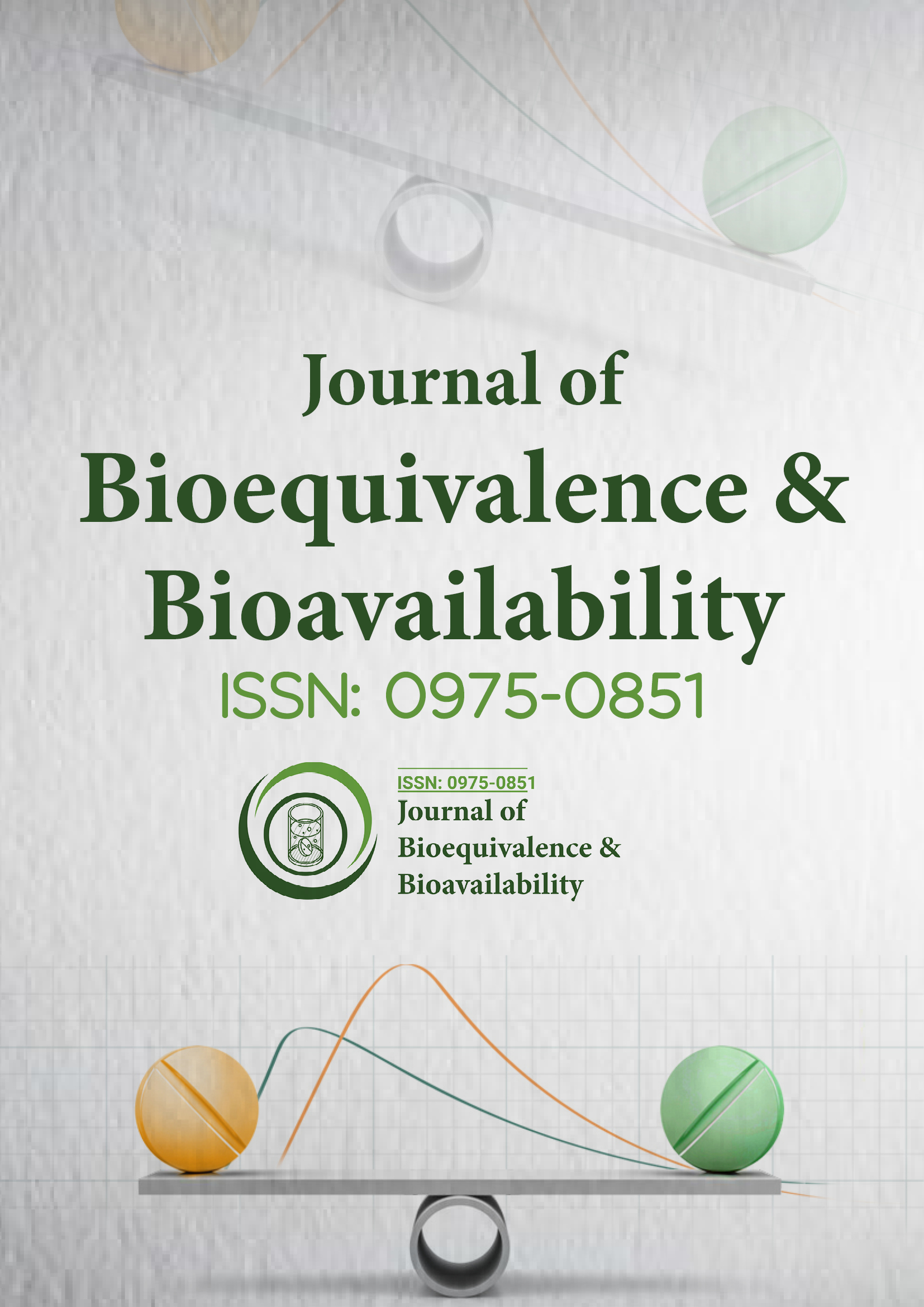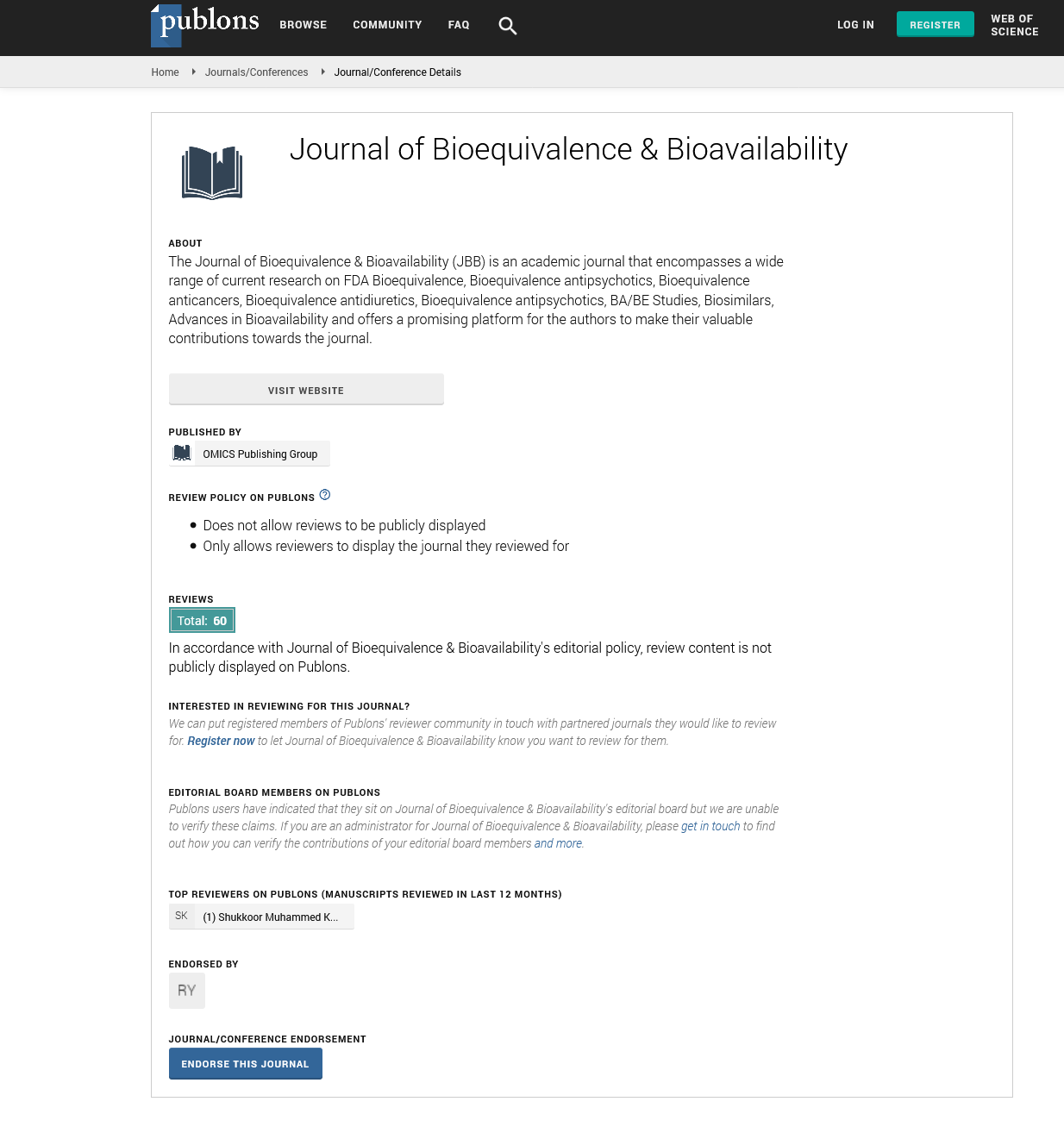Indexed In
- Academic Journals Database
- Open J Gate
- Genamics JournalSeek
- Academic Keys
- JournalTOCs
- China National Knowledge Infrastructure (CNKI)
- CiteFactor
- Scimago
- Ulrich's Periodicals Directory
- Electronic Journals Library
- RefSeek
- Hamdard University
- EBSCO A-Z
- OCLC- WorldCat
- SWB online catalog
- Virtual Library of Biology (vifabio)
- Publons
- MIAR
- University Grants Commission
- Geneva Foundation for Medical Education and Research
- Euro Pub
- Google Scholar
Useful Links
Share This Page
Journal Flyer

Open Access Journals
- Agri and Aquaculture
- Biochemistry
- Bioinformatics & Systems Biology
- Business & Management
- Chemistry
- Clinical Sciences
- Engineering
- Food & Nutrition
- General Science
- Genetics & Molecular Biology
- Immunology & Microbiology
- Medical Sciences
- Neuroscience & Psychology
- Nursing & Health Care
- Pharmaceutical Sciences
Perspective - (2025) Volume 17, Issue 1
Advances in Analytical Techniques for Pharmacokinetic Evaluation in Bioequivalence Studies
Nichole William*Received: 03-Feb-2025, Manuscript No. JBB-24-28931; Editor assigned: 05-Feb-2025, Pre QC No. JBB-24-28931 (PQ); Reviewed: 18-Feb-2025, QC No. JBB-24-28931; Revised: 25-Feb-2025, Manuscript No. JBB-24-28931 (R); Published: 04-Mar-2025, DOI: 10.35248/0975-0851.25.17.616
Description
Pharmacokinetics (PK) analysis plays a pivotal role in the evaluation of Bioequivalence (BE) for generic drug products. This analytical approach provides crucial insights into how a drug is absorbed, distributed, metabolized, and eliminated by the body, which directly influences its therapeutic efficacy and safety. In the context of bioequivalence studies, pharmacokinetics is essential for establishing whether a generic drug product demonstrates similar bioavailability to its Reference Listed Drug (RLD). Regulatory agencies such as the U.S. Food and Drug Administration (FDA) and the European Medicines Agency (EMA) rely heavily on pharmacokinetic parameters to determine bioequivalence, underscoring the significance of this scientific discipline in drug development and regulatory approval processes.
The primary objective of bioequivalence studies is to demonstrate that the rate and extent of absorption of the generic product are not significantly different from those of the innovator product when administered at the same molar dose under similar experimental conditions. Pharmacokinetic parameters such as the Maximum Plasma Concentration (Cmax), the time to reach Maximum Concentration (tmax), and the Area Under the plasma concentration-time Curve (AUC) are commonly used to assess these similarities. These parameters provide a quantitative measure of drug exposure over time and serve as surrogate markers for the drug's therapeutic performance.
The concept of bioequivalence hinges on the assumption that two drug formulations with similar pharmacokinetic profiles will elicit comparable clinical effects and safety profiles. Therefore, pharmacokinetic analysis serves as a bridge between pharmaceutical formulation and clinical efficacy. To ensure accurate and reliable results, bioequivalence studies are typically conducted using a randomized, two-period, two-treatment, two-sequence crossover design. This design minimizes inter-subject variability and allows for direct comparison of the test and reference products within the same individual.
One of the central elements of PK analysis in bioequivalence is the use of validated analytical methods, such as High-Performance Liquid Chromatography (HPLC) coupled with mass spectrometry, to accurately quantify drug concentrations in biological matrices. The accuracy and precision of these analytical methods are critical for generating reliable concentration-time profiles, from which pharmacokinetic parameters are derived. The data obtained are subjected to Non-Compartmental Analysis (NCA), which does not assume any specific compartmental model but instead relies on the Area Under the Curve (AUC) and the trapezoidal rule to estimate drug exposure.
Inter-subject and intra-subject variability can pose significant challenges in bioequivalence studies. Factors such as age, gender, genetic polymorphisms, disease states, and concomitant medications can influence drug absorption and metabolism, thereby affecting pharmacokinetic profiles. To mitigate these effects, careful subject selection and standardized study conditions are essential. Moreover, the use of replicate study designs and population pharmacokinetic modeling can help account for variability and provide a more comprehensive assessment of bioequivalence.
Another emerging area in pharmacokinetic analysis is the use of Dried Blood Spot (DBS) sampling, which offers a less invasive and more convenient method for blood collection in bioequivalence studies. DBS sampling can facilitate pharmacokinetic studies in special populations such as pediatrics and geriatrics, where traditional blood sampling methods may be challenging. Coupled with sensitive analytical techniques, DBS can provide reliable pharmacokinetic data with reduced sample volumes and improved patient compliance.
As the pharmaceutical industry continues to evolve, the importance of pharmacokinetic analysis in bioequivalence is likely to grow. With the increasing complexity of drug formulations and the rise of biologics and biosimilars, sophisticated pharmacokinetic methodologies will be essential for ensuring the safety, efficacy, and interchangeability of generic products. Moreover, the integration of artificial intelligence and machine learning into pharmacokinetic modeling holds promise for streamlining bioequivalence assessments and enhancing predictive capabilities.
In conclusion, pharmacokinetic analysis is an indispensable component of bioequivalence studies, providing the scientific basis for comparing the bioavailability of generic and reference drug products. Through the careful measurement and analysis of drug concentrations over time, pharmacokinetics enables the demonstration of therapeutic equivalence without the need for extensive clinical trials. The ongoing advancement of analytical technologies, modeling techniques, and regulatory frameworks will continue to refine and expand the role of pharmacokinetics in bioequivalence, ultimately contributing to the availability of safe, effective, and affordable medications for patients worldwide.
Citation: William N (2025). Advances in Analytical Techniques for Pharmacokinetic Evaluation in Bioequivalence Studies. J Bioequiv Availab. 17:616.
Copyright: © 2025 William N. This is an open-access article distributed under the terms of the Creative Commons Attribution License, which permits unrestricted use, distribution, and reproduction in any medium, provided the original author and source are credited.

